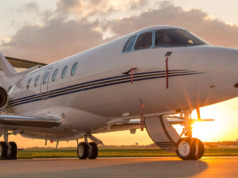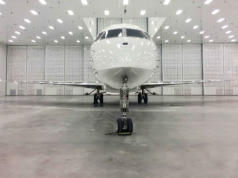
It takes only one flight for someone to grasp the advantages of business aviation. But deciding how best to access business aircraft – charter, jet card, fractional, whole aircraft ownership – can be a complex proposition.
Each has its distinct advantages, and there’s not a one-size-fits-all solution. Low utilization requirements often reinforce the decision to charter, join a club, or get a card. But as the need to fly increases, the value proposition may lose a bit of its luster. That’s when many people start to seriously consider aircraft ownership.
Beginning in the mid-1980s, the emergence of fractional programs made ownership a more practical option for those who needed less than full-time access. But while the infrastructure and manpower required to successfully operate a fractional program can deliver a fine customer experience, they also contribute to the highest cost of ownership.
Sole (Ownership) Searching
So what do you do when your needs grow beyond charter or fractional?
Jumping straight to full ownership is a leap that many have considered but few have made. There’s a sole-ownership “no-man’s land,” between 100 and 200 hours of usage per year, where the cost of purchasing your own aircraft is difficult to justify financially. Some make the leap anyway and attempt to recoup some of their costs by turning the aircraft over to a charter company. But charter revenue seldom meets owners’ high expectations, and most don’t relish the thought of strangers putting wear-and-tear on one of their principal assets.
Another option, co-ownership, can be the ideal solution for some. Structured correctly, co-ownership can deliver the tax-and-title autonomy of a fractional program, and aircraft access that rivals owning a whole aircraft. It literally can cut the net cost of owning the aircraft in half while providing many benefits that even fractional can’t, including access to the specific aircraft you own, flown by your own crew.
Co-ownership is not a new idea. However, only two percent of business aircraft worldwide are jointly owned. If it’s such a great idea, why isn’t there more interest?
While the financial benefits are obvious, joint ownership has a somewhat checkered reputation. Owners have faced a multitude of challenges, from schedule hoarding to expense disputes. Further exacerbating the problem, many DIY partnerships inadvertently bake in risk, ambiguity, and entanglement. The result can be a negative experience for one or both partners and everyone else concerned. Consequently, most people – even those who would benefit the most – do not consider co-ownership. And when asked, many industry insiders have discouraged it.
But the tide is turning.
Just Do It Right
Co-ownership, properly executed, is a really smart way to own an aircraft. It’s a logical step for anyone outgrowing other options, and it also allows owners to fly newer or more capable aircraft than they could ever cost-justify on their own.
But for co-ownerships to be successful, the inherent issues must be tackled and the risks mitigated. With that in mind, here are six of those issues, and ways they can be addressed:
- Matchmaking – Locating, vetting, and securing a compatible, qualified co-owner can be a formidable challenge. Ideally, co-owners have the financial wherewithal to own the whole aircraft, but can’t cost-justify it based on usage.
Alignment is key. Co-owners must agree on major points – the acquisition budget, aircraft make and model, home base, and much more. A friend at the club or a casual business acquaintance is not likely to turn out to be your best co-owner candidate. Needless to say, finding and successfully matching co-owners is a time-consuming undertaking. Unless you’re already confident you have the ideal co-owner, matchmaking is best left to industry professionals who make it a core service. - Structure – Setting up how the aircraft is owned is both an art and a science. Co-owners should be autonomous in tax and title. The co-ownership legal structure can provide unique advantages in this area. Done correctly, an individual co-owner can handle financing, tax, and depreciation as he or she sees fit, without being affected by the other owner. This is fundamentally different than a partnership structured as an LLC. Rather than developing a co-ownership agreement from scratch, consider engaging a firm that’s already thoroughly evaluated and addressed the full range of issues that co-owners encounter.
- Management – Chances are, you’ve already dealt with an aircraft management firm at some point, especially if you’ve chartered. They’re the ones who schedule and dispatch flights, coordinate maintenance, handle billing, and orchestrate other behind-the-scenes functions that relieve owners from the drudgeries of running a flight department.
In short, they’re the ones who make sure your airplane is ready to fly, wherever and whenever you need it. In a co-ownership, a first-rate management firm is essential to making the arrangement work smoothly and efficiently. Once the aircraft is operational, day-to-day communication regarding the aircraft should be channeled through the management company, not between co-owners. - Scheduling – Ask anyone who’s been in an aircraft partnership about his or her experience, and you’ll undoubtedly hear about scheduling conflicts. Agreeing up front on how the schedule works isn’t just important, it’s imperative. The management company should be empowered to administer the schedule per the co-owner agreement.
It’s a common misperception that owning half an aircraft means you get it only half the time. But consider that ideal co-owners are flying fewer than 200 hours per year. That means the aircraft is available the vast majority of the time each owner wants it. When a scheduling conflict does occur, it should be clear to both parties, per the agreement, how it is to be resolved. There doesn’t need to be a winner and loser. On the rare occurrence when the airplane is unavailable to one of the owners, alternative travel solutions can be provided by the aircraft management company. - Crew – Co-owning an aircraft enables you to see familiar faces on the flight deck every time you fly. They’re your pilots. And unless you are ready and willing to set up your own flight department, there are distinct advantages to having the pilots administratively attached to the management company. After all, it’s a regular part of the management company’s business to identify and hire crewmembers, administer payroll, and coordinate recurrent training and development.
- Exit – All too often, the exit plan is ill-defined, and that’s a huge pitfall. It’s critical to define exit upfront, including timing and methodology. The plan also should stipulate how the aircraft is valued at the end of the relationship, how it will be sold, and how the proceeds will be distributed.
A Fresh New Look
Co-ownership certainly is not for everyone, but it’s an option worth exploring as your travel needs evolve and grow. It’s the ownership strategy that delivers the lowest net cost of ownership, and it’s been systematically transformed into a smart, efficient way to access business aviation. BAA
Tom Bertels is chief marketing officer and co-founder of Partners in Aviation. The company’s mission is to help savvy companies and individuals cut the cost of aircraft ownership in half through co-ownership.




